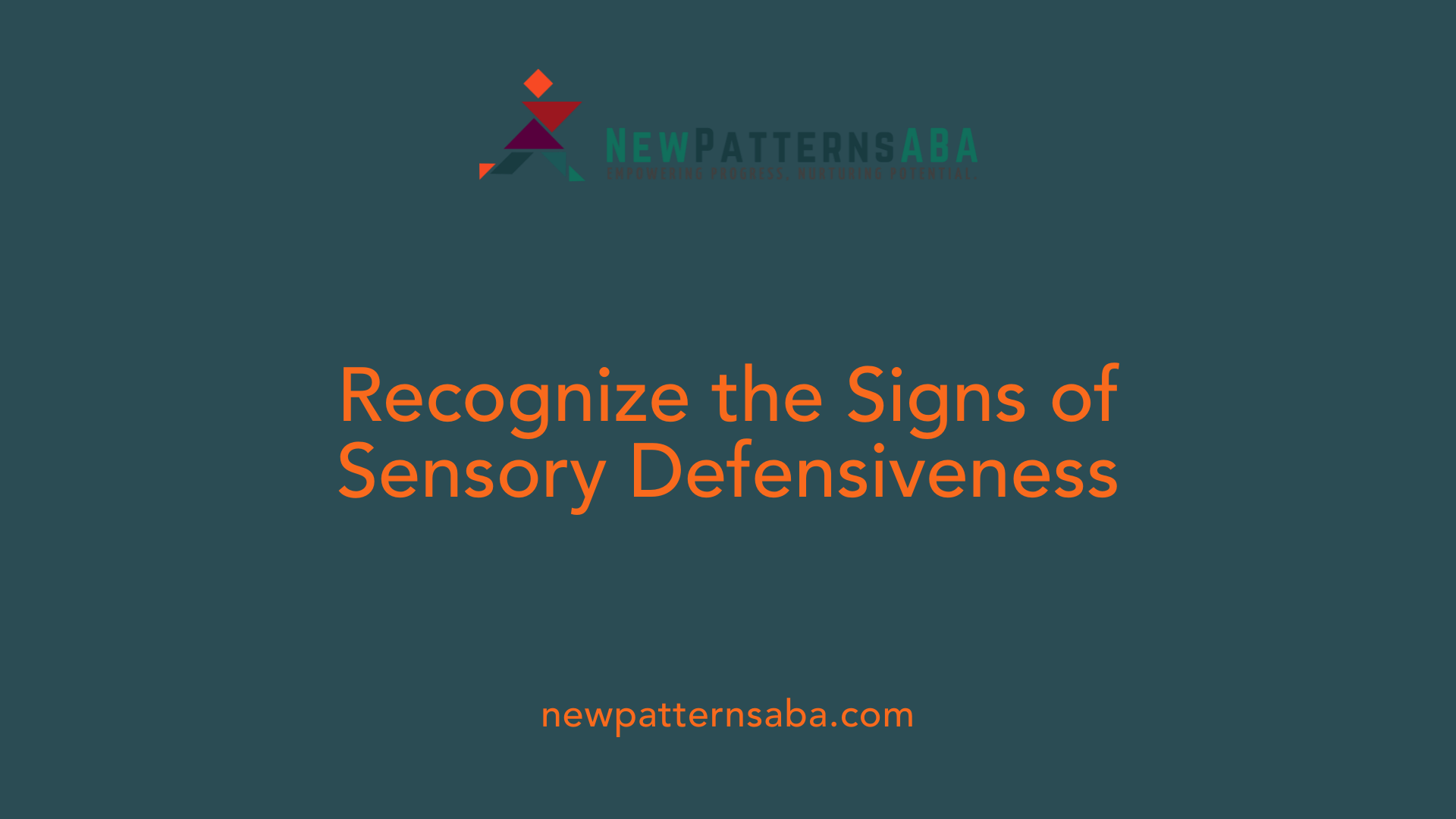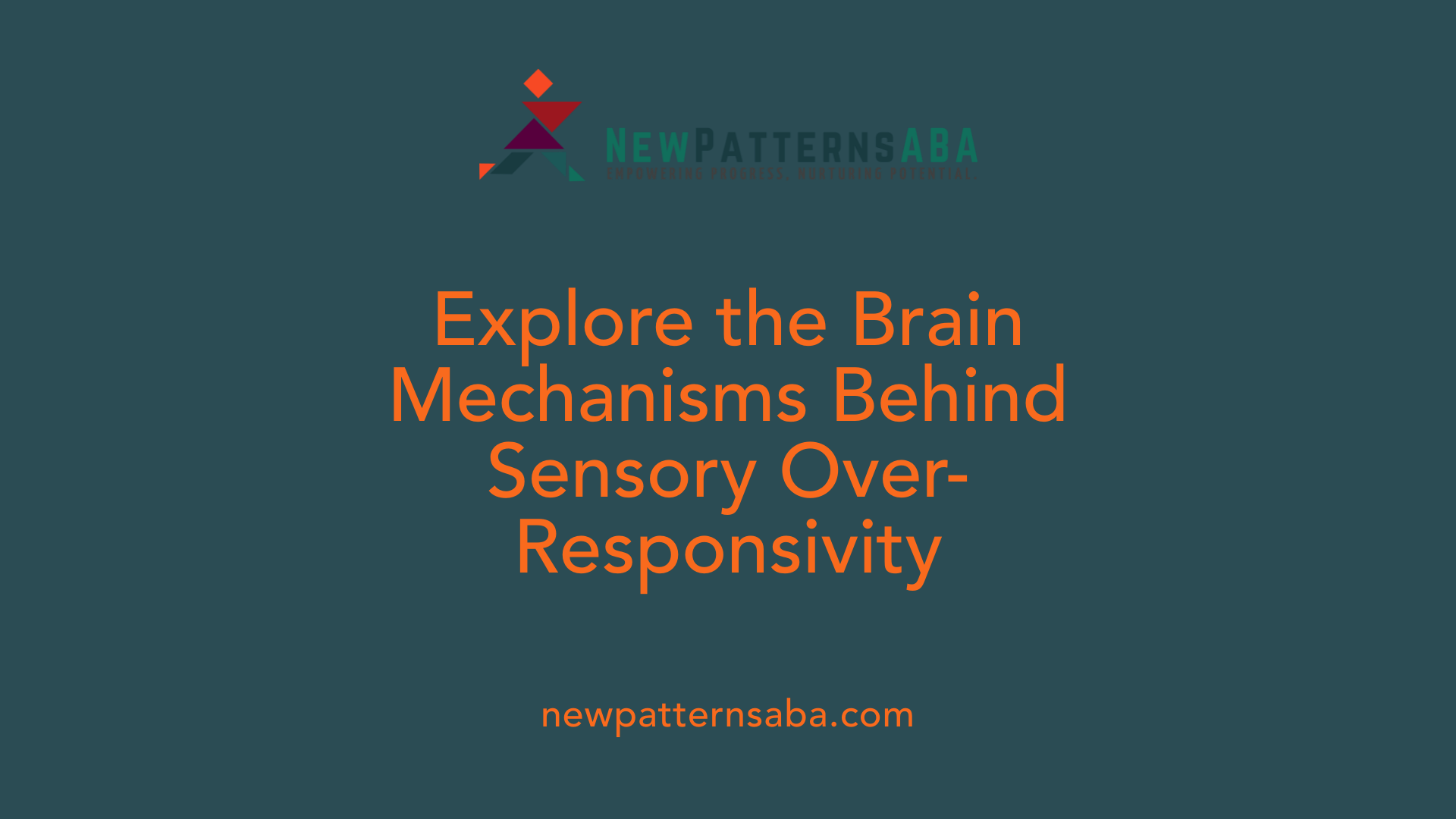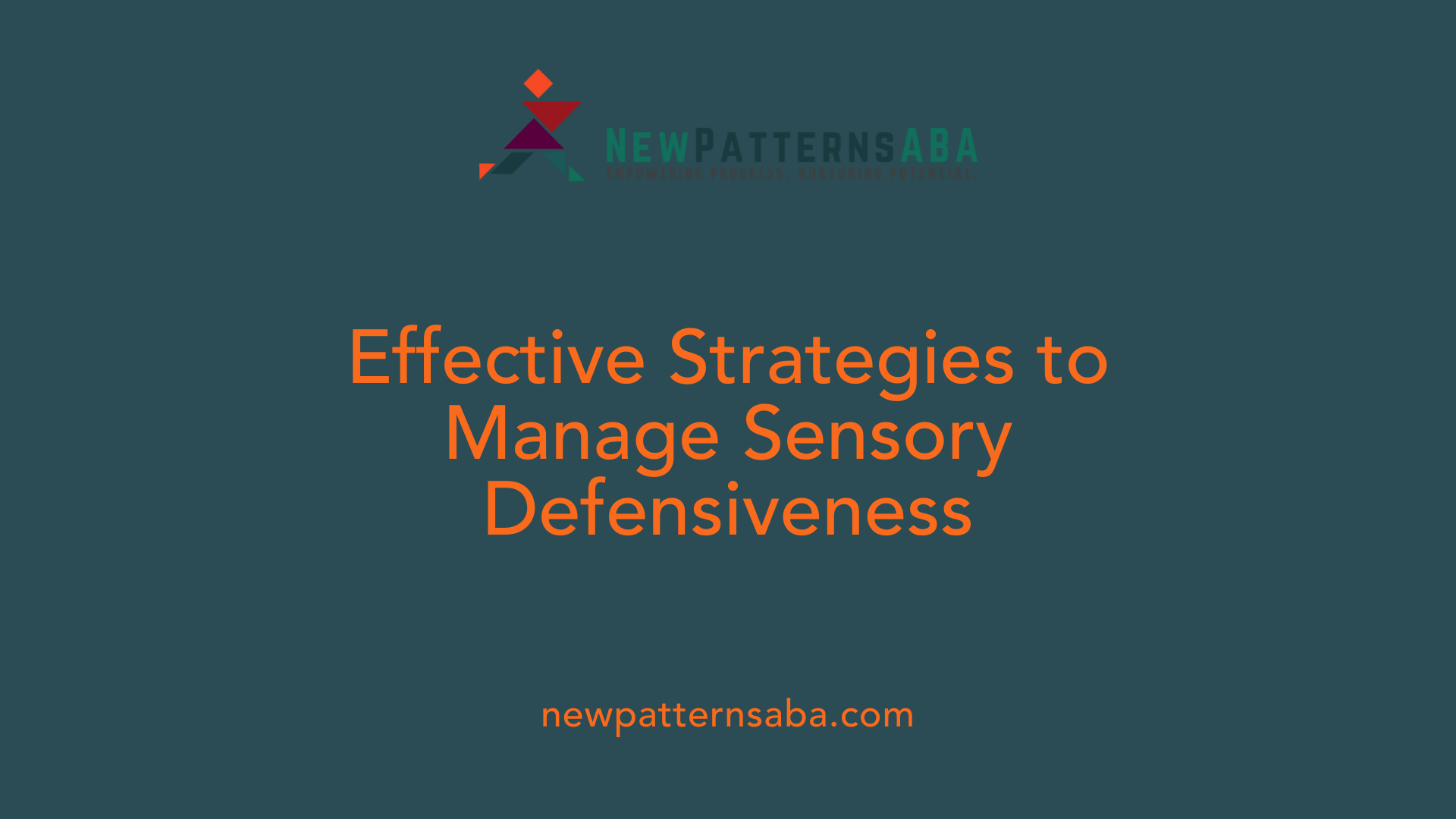Understanding and Managing Sensory Sensitivities
A Closer Look at Sensory Defensiveness in Autism
Sensory defensiveness is a prevalent and often challenging aspect of autism spectrum disorder (ASD). It involves heightened sensitivity or adverse reactions to stimuli that are typically neutral or positive for most people. Recognizing and addressing these sensory sensitivities is crucial for improving the quality of life, social interactions, and overall well-being of autistic individuals. This article explores the nature of sensory defensiveness, its signs and causes, and effective strategies for intervention and support.
What is Sensory Defensiveness in Autism?

What is sensory defensiveness in autism?
Sensory defensiveness in autism is a specific type of sensory processing disorder characterized by heightened sensitivity or strong negative reactions to stimuli that are usually neutral or even positive for most people. These stimuli can include sounds, textures, lights, or smells. Children with sensory defensiveness may react by avoiding certain sensations, appearing overwhelmed, or responding emotionally to sensory input. Typical behaviors include covering their ears, squinting from bright lights, or pulling away from various stimuli.
This condition can involve any or all sensory systems, such as tactile (touch), auditory (sound), and visual (sight). It stems from neurological differences in how the brain processes sensory information, leading to over-responsiveness or hyper-reactivity.
The impact of sensory defensiveness is profound, affecting daily activities, social interactions, and emotional regulation. Children may refuse to engage in typical physical contact, isolate themselves from busy environments, or become distressed in overwhelming settings.
To support children with sensory defensiveness, professionals often recommend strategies like sensory diets—personalized activities designed to provide appropriate sensory input—along with environmental adjustments such as noise-canceling headphones or calming lighting. Therapy approaches including occupational and speech therapy can help children develop coping mechanisms and improve their response to sensory stimuli.
Understanding sensory defensiveness within autism emphasizes the importance of recognizing each child's unique sensory profile. Tailoring support and modifications helps create a more comfortable and accessible environment, promoting better emotional and social outcomes.
Recognizing the Signs and Symptoms

What are the common signs and symptoms of sensory defensiveness?
Sensory defensiveness presents in various ways, often making children react intensely to stimuli that most people find neutral or positive. One of the most noticeable signs includes avoiding or feeling irritated by certain textures, fabrics, or foods. For example, a child might gag at certain foods, resist wearing specific clothing, or refuse to get messy during play.
Children with sensory defensiveness often exhibit strong reactions to auditory stimuli. They may cover their ears when exposed to loud noises like vacuum cleaners, toilet flushing, or shouting. These reactions stem from heightened sensitivity to sounds, which can cause discomfort or distress.
Visual defensiveness is also common. Kids may squint, cover their eyes, or look away from bright lights and busy patterns. They might prefer dim environments or avoid visual clutter to reduce overstimulation.
Beyond sensory-specific behaviors, there are emotional and behavioral signs indicating sensory defensiveness. Children may become easily frustrated, anxious, or irritable, especially when overwhelmed by their surroundings. They could display clinging behaviors or resist activities like grooming or handwashing.
Physical symptoms can include clumsiness, difficulty with fine motor activities, or discomfort with certain textures in clothing or play materials. Overall, these reactions reflect an exaggerated response to sensory input, often leading to avoidance of certain environments or activities.
Understanding these signs helps caregivers and educators recognize sensory defensiveness early. Recognizing the linked behaviors—like covering ears, avoiding certain textures, or appearing distressed in noisy or brightly lit settings—allows for tailored interventions to promote comfort and participation.
How do these signs relate to children with autism?
A high percentage of children with autism experience sensory processing challenges. Research from 2007 reports that approximately 95% of children with ASD show some level of difficulties with sensory input. These challenges can contribute significantly to behavioral issues like tantrums, aggression, or withdrawal.
Supporting children involves understanding their unique sensitivities. Implementing sensory diets, using noise-canceling headphones, or providing quiet spaces can help reduce overstimulation. Occupational and speech therapy are effective approaches to address sensory defensiveness, helping children develop coping strategies and improve sensory integration.
By being attentive to these signs, caregivers can create supportive environments that respect individual sensory preferences, aiding children in managing their reactions and improving daily functioning.
Underlying Causes and Brain Mechanisms

What causes sensory over-responsivity in autism?
Sensory over-responsivity (SOR) in autism stems from differences in how the brain processes sensory signals. Individuals with autism often have hyperactive responses in sensory cortices—the brain areas responsible for interpreting sights, sounds, smells, and tactile stimuli. These heightened responses mean that stimuli which might seem neutral or manageable to others trigger exaggerated reactions in some autistic individuals.
Research shows that the limbic system, particularly the amygdala, also plays a role. The amygdala is involved in emotional processing and threat detection. In autism, this region can become overactive in response to sensory input, contributing to feelings of anxiety or fear during overwhelming sensory experiences.
Furthermore, these individuals often show reduced habituation, meaning they do not easily get used to constant or repetitive stimuli. This contributes to sustained sensory overload, which can lead to behaviors such as avoidance, agitation, or panic.
Neurobiological studies highlight disrupted neural connectivity as a core issue. The prefrontal cortex, which helps regulate emotions and responses, may have weaker connections with sensory and limbic areas. This impaired communication hampers the brain’s ability to modulate sensory input effectively.
Genetic factors may influence these neural characteristics, impacting how sensory pathways develop and function. Environmental influences, such as early sensory exposure or trauma, might also shape neural responses, further affecting sensory processing.
In summary, sensory over-responsivity in autism is caused by a combination of hyperactive sensory regions, over-reactive limbic areas, and disrupted neural pathways, leading to heightened sensitivity and difficulty in managing sensory stimuli. Understanding these brain mechanisms is essential for developing targeted interventions and supports.
Strategies for Managing Sensory Defensiveness

What strategies are available for managing and intervening in sensory defensiveness?
Managing sensory defensiveness involves a combination of therapies, environmental adjustments, sensory tools, and educational support. One widely used approach is sensory integration therapy, which employs engaging, play-based activities to help children process sensory information more effectively. Therapists may guide children through tailored sensory exercises that gradually desensitize them to various stimuli.
Deep pressure techniques are another cornerstone of intervention. These include using weighted blankets, compression vests, and firm hugs, which provide calming proprioceptive input. Such strategies can reduce hypersensitivity and promote self-regulation.
Creating a personalized sensory diet is also beneficial. This involves planning daily activities like swinging, jumping, or engaging with textured materials, which support sensory regulation. Over time, gradual exposure to diverse textures and stimuli helps children build tolerance and diminish avoidance behaviors.
Environmental modifications are crucial, such as designing sensory-friendly spaces that diminish unnecessary stimuli and incorporating sensory aids like noise-canceling headphones or light filters. These adjustments help create a safe and manageable environment.
Supporting these interventions with education for parents and caregivers ensures consistency and reinforcement of strategies at home and other settings. Collaborating with qualified occupational therapists often yields the best outcomes.
Additionally, incorporating relaxation and mindfulness techniques can assist children in managing overwhelming situations. Overall, a comprehensive, individualized approach maximizes progress in reducing sensory defensiveness and improving daily functioning.
| Strategy | Description | Example Activities/Tools |
|---|---|---|
| Sensory integration therapy | Play-based therapy to improve sensory processing | Swinging, textured play, guided sensory exercises |
| Deep pressure techniques | Calming input via firm touch or pressure | Weighted blankets, vests, firm hugs |
| Sensory diet | Customized daily activities to support regulation | Jumping, brushing, tactile play |
| Environmental modifications | Creating sensory-friendly spaces | Noise reduction, soft lighting, calming colors |
| Sensory tools and aids | Devices or objects aiding sensory comfort | Noise-canceling headphones, sensory brushes |
| Parent and caregiver education | Training to support consistent intervention | Workshops, educational resources |
For more detailed strategies, resources include occupational therapy, sensory diet techniques, and autism-specific interventions available through various support networks.
Impact of Tactile Defensiveness on Daily Life
How does tactile defensiveness impact children with autism?
Tactile defensiveness, a common feature in children with autism, significantly influences their everyday experiences. Children with this sensory challenge often feel distressed or uncomfortable when touched or exposed to certain textures. This can lead to behaviors like avoiding physical contact, refusing to play with messy or textured materials, or reacting negatively to being hugged or kissed.
Because of these reactions, children might become clingy or lash out as a response to sensory overload. Such behaviors not only affect their emotional well-being but also interfere with social interactions, making peer engagement and family involvement more difficult.
Tactile defensiveness arises from problems in processing sensory input from the touch system. These children may exhibit both hypersensitivity—reacting strongly to textures or touch—and hypo-responsiveness—seeking intense tactile stimulation. This duality can cause inconsistent behaviors, such as avoiding certain fabrics but seeking out others in self-stimulatory ways.
Interventions tailored to tactile sensitivities can make a significant difference. Techniques like deep pressure therapy—using weighted blankets, firm massages, or specialized protocols like Wilbarger Brushing—help soothe and calm sensory reactions. Choosing comfortable, seamless fabrics and informing children before physical contact can reduce anxiety.
Overall, tactile defensiveness affects not just physical comfort but also social participation and daily routines. Recognizing these challenges emphasizes the importance of sensory integration therapies to support children in managing their tactile sensitivities and improving their quality of life.
Supporting Sensory Needs: A Path Forward
Addressing sensory defensiveness in autism requires an understanding of its neurophysiological basis, recognizing its signs, and implementing tailored strategies for management. Creating supportive environments, employing therapeutic interventions, and educating caregivers are essential steps toward helping autistic individuals cope with sensory sensitivities. As research continues to evolve, especially in understanding brain mechanisms, more effective, evidence-based approaches will emerge, paving the way for improved quality of life and greater participation in daily activities. Emphasizing individual sensory profiles and promoting self-advocacy can further empower autistic individuals to navigate their sensory worlds confidently.
References
- Understanding Sensory Defensiveness in Autism
- Top 5 autism tips: managing sensory differences
- Best Sensory Strategies for Handling Tactile Defensiveness
- What is Sensory Defensiveness Disorder?
- Sensory issues
- Sensory Processing in Autism: A Review ...
- TACTILE RESPONSIVENESS PATTERNS AND THEIR ...
- Sensory Integration in Autism Spectrum Disorders
- Understanding Sensory Defensiveness in Autism






